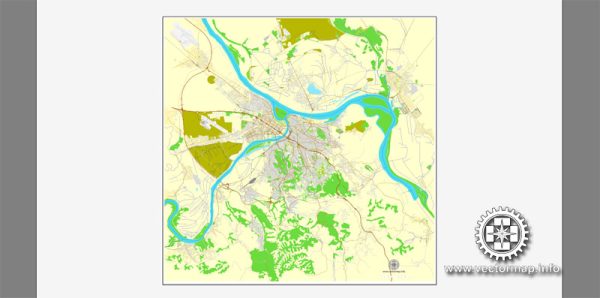Belgrade, the capital of Serbia, has a rich and diverse history that spans over two millennia. Its strategic location at the confluence of the Sava and Danube rivers has made it a vital crossroads in the Balkans, resulting in a history marked by a succession of different empires, cultures, and rulers. Here’s a brief overview of Belgrade’s historical development:
- Ancient and Roman Period:
- Belgrade’s history dates back to ancient times, with evidence of human settlements in the area as early as the 6th millennium BC.
- The Celts and the Thracians inhabited the region before it was conquered by the Roman Empire in the 1st century BC.
- The Romans established the military fort of Singidunum on the site of present-day Belgrade, which later played a significant role in the Roman defense system.
- Byzantine and Medieval Period:
- With the fall of the Western Roman Empire, Belgrade was ruled by various barbarian groups and later became part of the Byzantine Empire.
- The city was frequently contested between the Byzantines and various Slavic, Avar, and Hungarian tribes during the early medieval period.
- In the 12th century, the city became part of the Kingdom of Hungary.
- Ottoman Period:
- The Ottoman Empire captured Belgrade in 1521, marking the beginning of over three centuries of Ottoman rule.
- Under Ottoman control, Belgrade became a prominent fortress and an important administrative center in the region.
- It experienced significant cultural and architectural influences from the Ottoman Empire during this time.
- Habsburg Rule:
- In the late 17th century, Belgrade was briefly captured by the Habsburg Monarchy, but it was retaken by the Ottomans.
- The Habsburgs would later regain control of the city in the 18th century as part of the Habsburg-Ottoman wars.
- Modern Era:
- Belgrade played a crucial role in the Serbian Revolution against the Ottomans in the early 19th century, eventually leading to Serbian independence.
- The city was established as the capital of the Principality of Serbia in 1841.
- Over the 20th century, Belgrade was part of various Yugoslav states and underwent significant development and urbanization.
- Yugoslav Period:
- After World War I, Belgrade became the capital of the Kingdom of Yugoslavia, and later, the Socialist Federal Republic of Yugoslavia.
- The city was heavily bombed during World War II and played a prominent role in the post-war reconstruction of Yugoslavia.
- Recent History:
- After the breakup of Yugoslavia in the 1990s, Belgrade became the capital of the Federal Republic of Yugoslavia, which eventually evolved into the State Union of Serbia and Montenegro.
- Following Montenegro’s independence in 2006, Belgrade became the capital of the Republic of Serbia.
Belgrade has seen a turbulent history marked by various empires, wars, and changing political landscapes. Today, it is a vibrant European city with a rich cultural heritage, historic architecture, and a dynamic contemporary culture. It continues to be an important cultural, economic, and political center in the Balkans.



 Author: Kirill Shrayber, Ph.D.
Author: Kirill Shrayber, Ph.D.